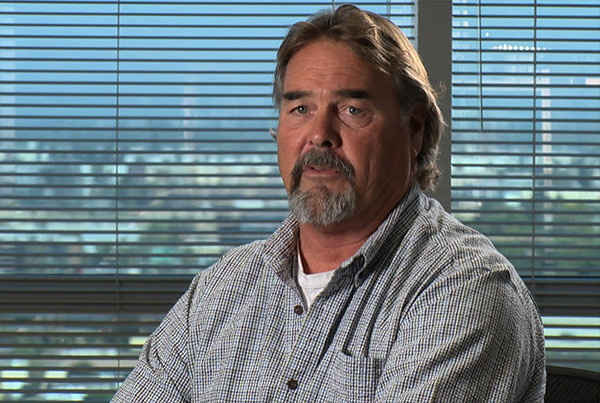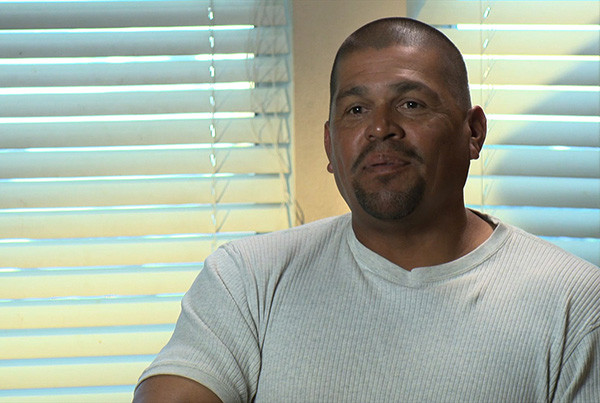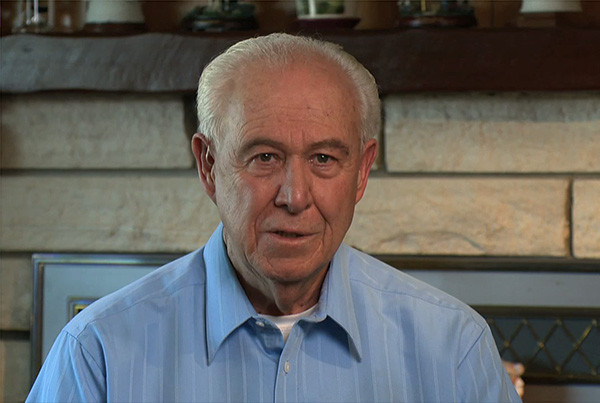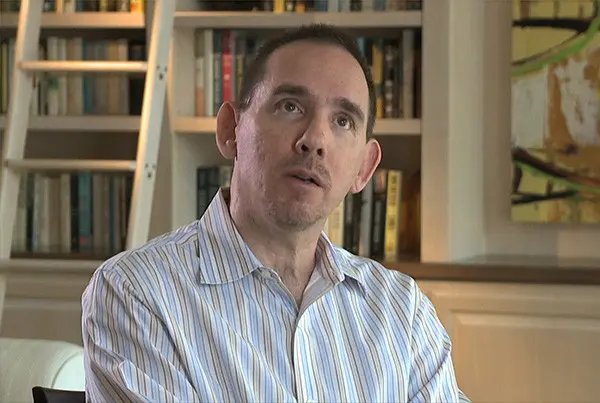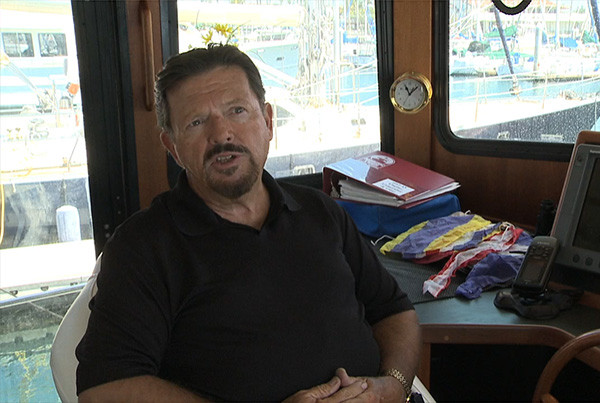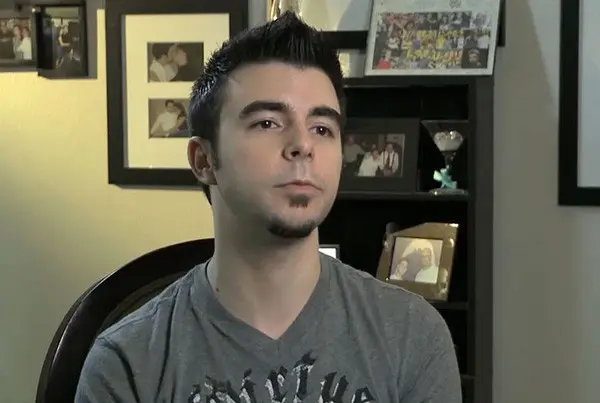Surgery – Plication
Home > Peyronie’s Disease > Surgery – Plication
How To Straighten A Bent Penis – Plication
Medication treatment often proves ineffective for Peyronie’s disease, which makes surgery the best treatment option. One excellent surgical treatment method for penile curvature is penile plication surgery.
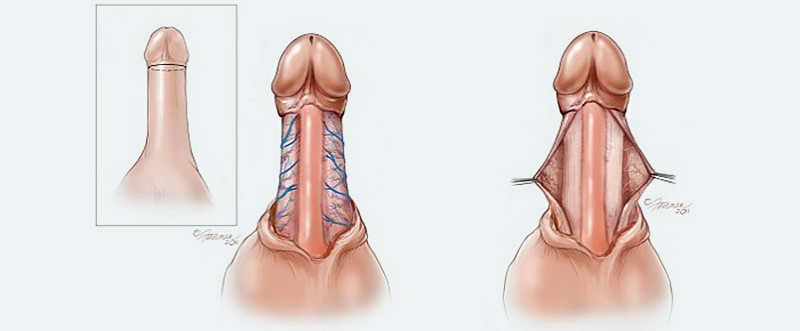
The surgery begins with a circumcising incision to “de-glove” the penis, exposing the tunica albuginea as well as the sensitive nerves and blood vessels adherent to the tunica. The nerves and blood vessels are then very carefully dissected away from the tunica using optical magnification and specialized instruments.
The next step of the procedure requires giving the patient an artificial erection. To do so, saline is rapidly infused into the spongy tissue inside the penis as compression is simultaneously applied under the scrotum to restrict outflow. The artificial erection caused by the saline allows the surgeon to identify the area of maximal curvature, and temporary placating sutures are placed as a test to see if making a permanent change will partially or completely resolve the curvature. An artificial erection is again achieved to confirm that the penile curvature was successfully straightened.
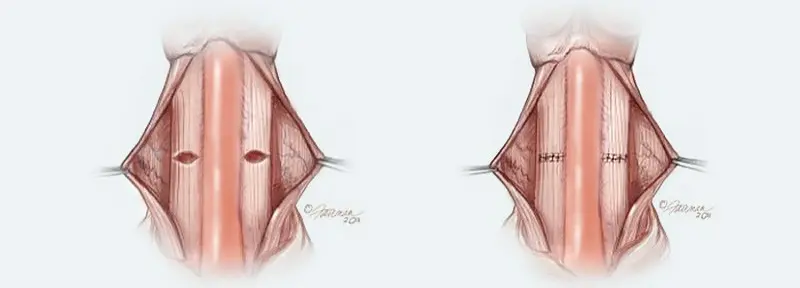
The penile plications are then made permanent with an oval-shaped incision that excises a portion of the tunica and a 2-layer closure using absorbable sutures that will eventually dissolve.

The penile skin is first “degloved” using a circumcising incision that exposes the neurovascular bundles, which is the nerves and arteries going towards the head of the penis. These essential nerves and arteries are carefully dissected away from the tunica of the penis. This is a very technically challenging maneuver, and one of the reasons why expertise in penile surgery is so crucial for successful penile plication without Peyronie’s Disease side effects or complications.
Next, wedge excisions are performed. In the example above there are 2 excisions, but the number and location of the excisions are based on the location and degree of curvature. The excisions are then closed in a-2 layer closure, the neurovascular structures are repositioned to the normal location, and finally, the skin is closed.
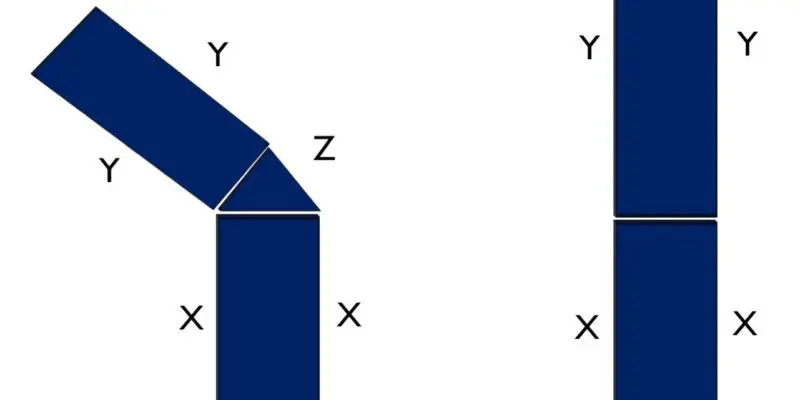
Illustration demonstrating to what extent plication is needed to correct penile curvature
When the penis is bent during an erection, one side is longer than the other. If our goal is to straighten what is shown on the left, we shorten the longer side (by the length of “Z”) to make it like what is shown on the right. If we do not shorten the longer side enough, there will be a continued bend. If we shorten the longer side too much, it will then tilt to the other side. It would therefore seem to us that a surgeon who promotes a technique that shortens the longer side of the penis to a lesser extent than what we do would not be fully straightening the penis with penile plication.
When our patients who are contemplating plication ask how much their penis will be shortened, it should be understood that nothing is chopped off! The answer is that the longer side is made fairly equal to the shorter side. In cases of upward curvature, we do not attempt to fully straighten the penis because a slightly upward penile bend is normal.
Our approach is more time consuming and technically challenging than many other techniques. This is because we do not use a penile tourniquet at the base of the penis to prevent bleeding. We have never found it necessary to cut off blood flow to the penis as we carefully dissect out the sensitive nerves and arteries to the head of the penis during the surgery but this requires additional time and attention to detail. In addition, we do not use permanent sutures. If we did, this would reduce the need for exposure and considerably reduce the amount of time needed to shorten the long side. Instead of using temporary plicating sutures as a test prior to removing a wedge and using absorbable suture for closure, we would use permanent sutures without the additional steps. However, some patients report discomfort from the knots of the permanent sutures under the skin and others have reported hearing a pop of the suture used to straighten the penis where they then had a curved penis again.
It can’t be said that our technique is “better” than other methods of plication. However we prefer our approach because we do not want to leave permanent suture, and have had excellent outcomes for over 20 years with our approach to Peyronie’s Disease plication surgery.

